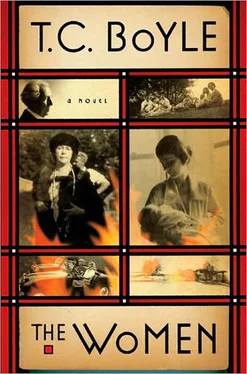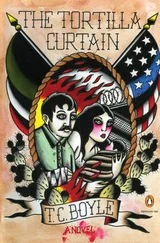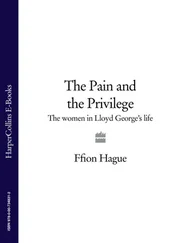32
True enough. Wrieto-San employed the same subterfuge with regard to Miriam’s role in the household when he moved her in ten years earlier, even going so far as to draw up a contract putting her wages at $60 a month, but it proved transparent. Within days, the papers were decrying the architect’s continued flaunting of convention, denouncing Taliesin as a “Sin Nest” and “Love Bungalow” and the like.
33
Jasper J. Jesperson, 3720 Figueroa, Los Angeles, California. Private Investigations of a Discreet Nature.
34
An indication that Wrieto-San was attempting to be discreet, if not deceptive. In recent years, he’d come to prefer the Congress, on Michigan Avenue (an undistinguished edifice, really, built in 1893 as an annex to Louis Sullivan’s Auditorium Building across the street), perhaps because it was the place to be seen, its Pompeian Ballroom attracting the smart set as well as Chicago’s social elite. I never stayed there myself, even in later years when I could easily have afforded it — the only time I spent a night in Chicago during my apprenticeship was when Daisy Hartnett and I were able to get away on the pretext of her mother’s illness. The hotel we chose was inconspicuous, to say the least. And a whole lot cheaper than the Congress.
35
Miriam was noted for the originality of her dress.
36
Magnesium oxide. Remember magnesium oxide? The famous photograph of myself and three other apprentices leaning over Wrieto-San’s shoulder as he plied the tools of his trade was taken during the flashbulb era, of course, but I still have the photograph my father insisted I pose for in commemoration of my return to the United States some four years earlier. The picture shows an earnest, slim (I wish it were so now) young man in jacket and tie and formally lubricated hair who is about to experience a coughing fit as the cloud of magnesium dust engulfs him on a wayward gust off the San Francisco Bay. I believe I spat up white phlegm for a week.
37
This was a private ceremony, in November of 1923. The reporter’s confusion may allude to Miriam’s comments to the press in 1915, shortly after it was discovered that she had moved into Taliesin as Wrieto-San’s mistress. At that time she quite forcefully expressed her contempt for the institution of marriage (“Frank Wright and I care nothing for what the world may think. We are as capable of making laws for ourselves as were the dead men who made the laws by which they hoped to rule the generations after them”).
38
As will be seen below, the yellow press of the day came to refer to Wrieto-San and his “affinities” in a kind of shorthand nomenclature, so notorious were their affairs and so public the airing of their laundry, as the saying goes.
39
Precise derivation of the nickname unknown. A Montenegrin endearment?
40
She’d allegedly been jailed for a brief period in Paris after attacking her ex-lover with a knife, and from the beginning she made it known to Wrieto-San that she was not to be trifled with. She kept a pistol. And she firmly believed that her scarab ring was invested with the power to reconcile her accounts in the supernatural sphere, almost in the way of the Voodooists of Haiti and New Orleans.
41
Vladimir Lazovich, a shipping agent living in Queens, New York. Olgivanna’s brother. Not to be confused with Vlademar, her former husband.
42
For Wrieto-San an uncharacteristic emotion.
43
Catherine “Kitty” Tobin Wright (1871–1959), Wrieto-San’s first wife. They married, against all sense and advice, when he was twenty-one and she just out of high school. The children — Lloyd, John, Catherine, David, Frances and Llewellyn — came in rapid succession, like plums dropping from a tree. By all accounts, Wrieto-San seemed bewildered by them. It is unlikely that he would have given much thought or consideration to Catherine’s pregnancies, beyond the obvious financial and architectural exigencies to which they gave rise.
44
This must have been especially trying. Wrieto-San was the world’s greatest self-promoter (with the possible exception of P.T. Barnum), and to walk down a street or step into a room without broadcasting the news was pure poison to him.
45
One can’t help wondering where Wrieto-San came up with the funds for this expedition, given that he was in debt for the rebuilding of Taliesin and Miriam’s upkeep at the Southmoor Hotel, not to mention legal fees. In all of 1926, he built only two very minor commissions.
46
Julian Carleton, 1888(?)-1914. Manservant, Barbadian, murderer. See below.
47
Of course, Wrieto-San was the apostle of home, his revolutionary Prairie houses built round a central hearth and the rooms open to one another so as to provide an integrated familial space. “A true home is the finest ideal of man,” he famously pronounced in An Autobiography (but concluded the maxim, rather schizophrenically, I’m afraid, with this: “and yet — well to gain freedom I asked for a divorce”).
48
Baron Kishichirō Ōkura, 1882–1963. Playboy, hotelier, motorcar enthusiast. As president of the Imperial Hotel and son of the head of the investment group formed to fund its construction (Baron Kishichirō Ōkura, the elder, 1837–1928), he was instrumental in awarding the commission to Wrieto-San. I met him twice, at receptions my father gave in Tokyo. He was a sleek, chillingly handsome man who favored Western dress and was interested in two subjects only, as far as I could ascertain: single-malt scotch whiskey and very fast automobiles.
49
I can’t speak for the authenticity of this usage. I have my doubts that the term was commonly employed in the 1920s, except perhaps among votaries of the game of poker — I certainly don’t remember having heard or used it in conversation myself — but O’Flaherty-San assures me of its accuracy. Of course, he wasn’t born until 1941. In a place called Tootler’s Falls, Virginia.
50
More likely it was some combination of grain spirits colored with caramel — or worse. It was possible to obtain la chose authentique from the French Canadian bootleggers who smuggled it across the Great Lakes or the gangsters who employed them, but that was only in theory. Most people — and I was among them — had to settle for the degraded product of amateur distillers, which was often laced with rubbing alcohol or antifreeze and occasionally resulted in blindness, paralysis and even fatalities. In my student days, I once obtained — for twelve dollars a quart — two bottles of what was reputed to be bonded Kentucky bourbon but which, on closer inspection, turned out to be a lethal combination of molasses and turpentine. If you knew where to look, however, sake was always available. Out of the stone jug, with the kanji lovingly inscribed on the round protuberance of its cool little belly.
51
I vividly recall hearing this batrachian vocalizing myself, during my first summer at Taliesin. It is, indeed, a dismal sound, depressing in the extreme, as if the earth were vomiting up its dead.
52
I’ve seen the newspaper clippings. What Miriam is overlooking here — or perhaps “suppressing” is a better way of putting it — is Wrieto-San’s counterattack under the headline WRIGHT HINTS AT SANITY HEARING FOR OUSTED WIFE.
53
House keys, that is. He never carried them, considered them a nuisance, and as for the keys to his various automobiles, the chauffeur of the moment could always be counted on to produce them when Wrieto-San felt like taking a spin.
54
She would have seen for the first time — and, I might add, the last — the garden room and decorative pool, for instance, off of Wrieto-San’s bedroom, as well as the new balcony and second-floor guestroom above the living room and the six-panel screen by Yasunobu (pine, birds, cherry blossoms) he’d installed on the wall beneath it.
Читать дальше












